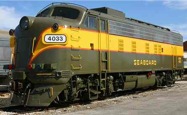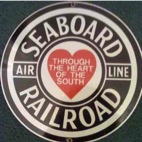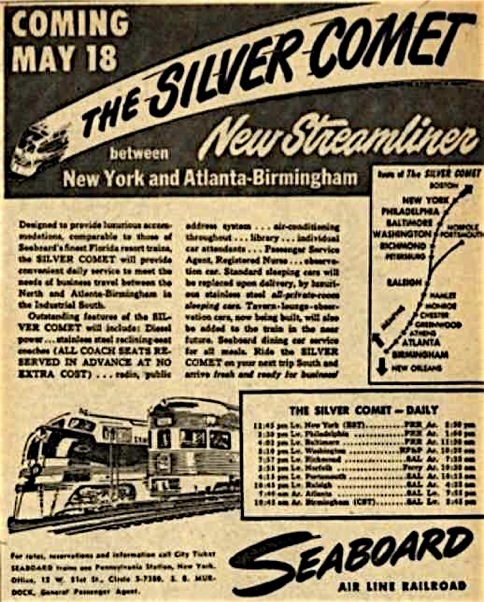




Silver Comet
By the 1950's, the Silver Comet service had been downgraded losing observation and sleeper/lounge cars and by 1969, with air conditioning and interstate highways spelling the end of passenger train travel, the Silver Comet ran only between Atlanta and Washington D.C. and was finally discontinued later that year.
In addition to the Silver Comet, Seaboard also ran the Silver Meteor, the Silver Star and the Orange Blossom Special and was known as the "Route of Courteous Service."
When passengers failed to materialize in the expected quantities, the line slowed the train, first by adding stops where it would haul Florida-bound travelers over some legs and freight cars on others. By the time service ended in 1969, the Southern Comet was doing workhorse duty for Seaboard Air Lines.
Today, because of the dedication of the people at the Path Foundation in Atlanta and the many volunteers and sponsors of the Trail, visitors and enthusiasts of all endeavors are able to take advantage of the trail and enjoy approximately sixty miles of worry free adventure on the trail in Georgia. No cars or trucks, nothing but winding trails, stately trees, rock cliffs, meandering rivers with rushing waters, boardwalks, tunnels, bridges, scenic views and friendly animals to share your experience.
* Note: Air Line had nothing to do with air travel. Air line meant a direct (straight) roadbed, as opposed to the "coast line" railroads, which would follow the coast until a major river, then journey inland to narrow point to cross.
In addition to the Silver Comet, Seaboard also ran the Silver Meteor, the Silver Star and the Orange Blossom Special and was known as the "Route of Courteous Service."
When passengers failed to materialize in the expected quantities, the line slowed the train, first by adding stops where it would haul Florida-bound travelers over some legs and freight cars on others. By the time service ended in 1969, the Southern Comet was doing workhorse duty for Seaboard Air Lines.
Today, because of the dedication of the people at the Path Foundation in Atlanta and the many volunteers and sponsors of the Trail, visitors and enthusiasts of all endeavors are able to take advantage of the trail and enjoy approximately sixty miles of worry free adventure on the trail in Georgia. No cars or trucks, nothing but winding trails, stately trees, rock cliffs, meandering rivers with rushing waters, boardwalks, tunnels, bridges, scenic views and friendly animals to share your experience.
* Note: Air Line had nothing to do with air travel. Air line meant a direct (straight) roadbed, as opposed to the "coast line" railroads, which would follow the coast until a major river, then journey inland to narrow point to cross.


“ Streamliner” thru Tropical Florida
History of the Silver Comet
Started in 1947, at the height of the rail travel era, the Silver Comet sped across the Southeast, connecting many cities with direct rail service on the Seaboard Air Lines*. Competing for this traffic was Southern Railways'; Southerner and Crescent service, both of which had been running for a much longer time on a route that was more direct. For 22 years the Silver Comet serviced the cities of the Great Southern Arc, carrying passengers from the northeast United States (beginning in New York City and including stops in Philadelphia, Baltimore, and Washington, D. C.) to Virginia, North Carolina, South Carolina, Georgia (including its major stop, Atlanta), finishing its run in Birmingham, Alabama. During the first few years, service from New York to Birmingham took 23 hours and was considered to be "luxury class." The route was never a major success, facing growing competition from airplanes and, to a lesser extent, cars.
In 1948 the train received national attention when Strom Thurmond and his pals walked out of the Democratic Convention in Philadelphia, and took the Silver Comet and rode to Birmingham, where they held their own convention.
In 1948 the train received national attention when Strom Thurmond and his pals walked out of the Democratic Convention in Philadelphia, and took the Silver Comet and rode to Birmingham, where they held their own convention.






